Yuanfu Lu
Long Short-Term Temporal Meta-learning in Online Recommendation
May 08, 2021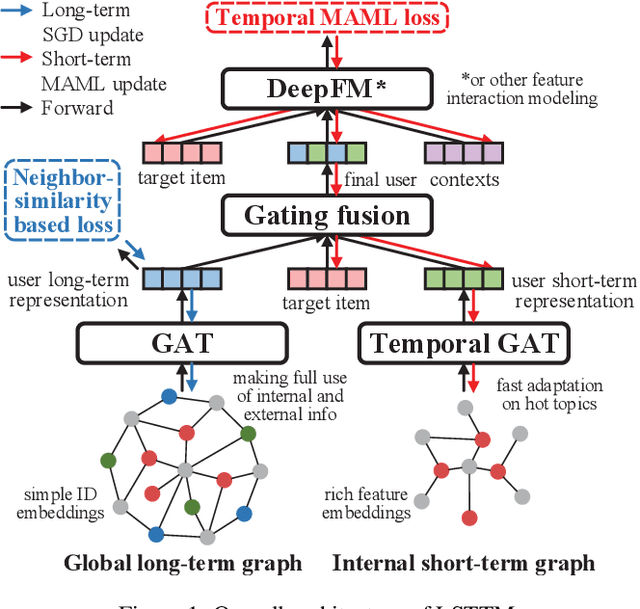

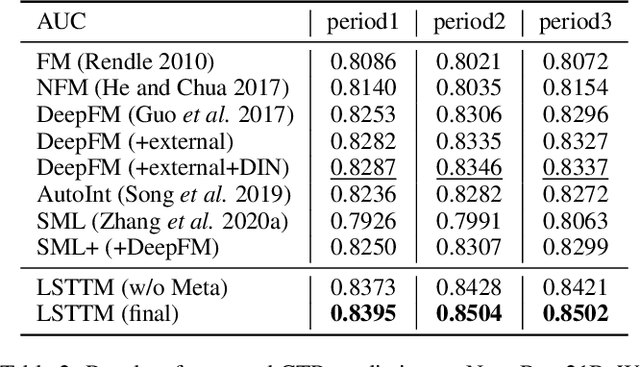

Abstract:An effective online recommendation system should jointly capture user long-term and short-term preferences in both user internal and external behaviors. However, it is challenging to conduct fast adaptations to variable new topics while making full use of all information in large-scale systems, due to the online efficiency limitation and complexity of real-world systems. To address this, we propose a novel Long Short-Term Temporal Meta-learning framework (LSTTM) for online recommendation, which captures user preferences from a global long-term graph and an internal short-term graph. To improve online learning for short-term interests, we propose a temporal MAML method with asynchronous online updating for fast adaptation, which regards recommendations at different time periods as different tasks. In experiments, LSTTM achieves significant improvements on both offline and online evaluations. LSTTM has also been deployed on a widely-used online system, affecting millions of users. The idea of temporal MAML can be easily transferred to other models and temporal tasks.
Temporal Network Embedding with Micro- and Macro-dynamics
Sep 10, 2019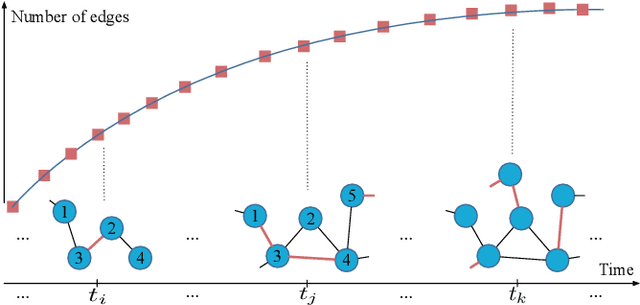
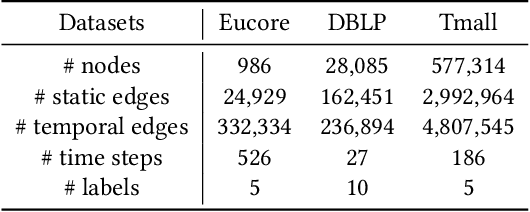


Abstract:Network embedding aims to embed nodes into a low-dimensional space, while capturing the network structures and properties. Although quite a few promising network embedding methods have been proposed, most of them focus on static networks. In fact, temporal networks, which usually evolve over time in terms of microscopic and macroscopic dynamics, are ubiquitous. The micro-dynamics describe the formation process of network structures in a detailed manner, while the macro-dynamics refer to the evolution pattern of the network scale. Both micro- and macro-dynamics are the key factors to network evolution; however, how to elegantly capture both of them for temporal network embedding, especially macro-dynamics, has not yet been well studied. In this paper, we propose a novel temporal network embedding method with micro- and macro-dynamics, named $\rm{M^2DNE}$. Specifically, for micro-dynamics, we regard the establishments of edges as the occurrences of chronological events and propose a temporal attention point process to capture the formation process of network structures in a fine-grained manner. For macro-dynamics, we define a general dynamics equation parameterized with network embeddings to capture the inherent evolution pattern and impose constraints in a higher structural level on network embeddings. Mutual evolutions of micro- and macro-dynamics in a temporal network alternately affect the process of learning node embeddings. Extensive experiments on three real-world temporal networks demonstrate that $\rm{M^2DNE}$ significantly outperforms the state-of-the-arts not only in traditional tasks, e.g., network reconstruction, but also in temporal tendency-related tasks, e.g., scale prediction.
Relation Structure-Aware Heterogeneous Information Network Embedding
May 15, 2019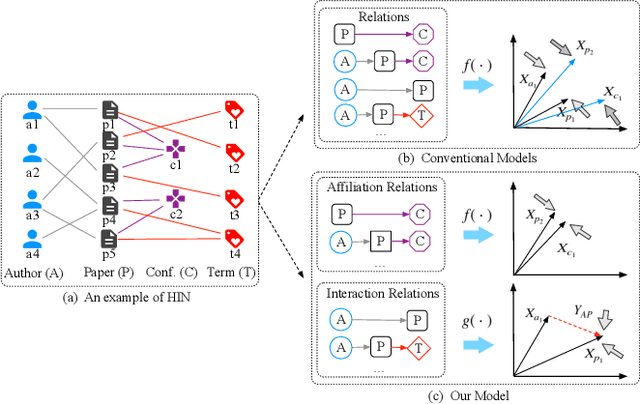
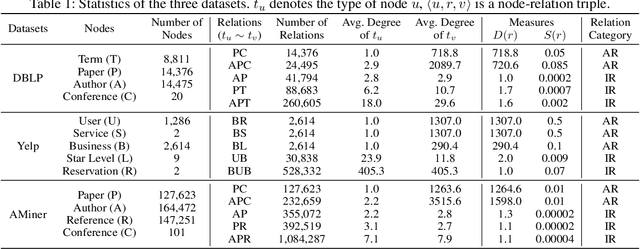
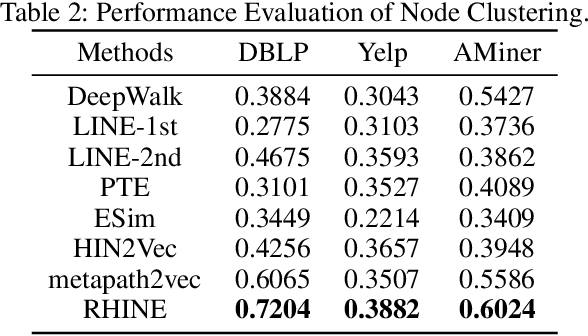

Abstract:Heterogeneous information network (HIN) embedding aims to embed multiple types of nodes into a low-dimensional space. Although most existing HIN embedding methods consider heterogeneous relations in HINs, they usually employ one single model for all relations without distinction, which inevitably restricts the capability of network embedding. In this paper, we take the structural characteristics of heterogeneous relations into consideration and propose a novel Relation structure-aware Heterogeneous Information Network Embedding model (RHINE). By exploring the real-world networks with thorough mathematical analysis, we present two structure-related measures which can consistently distinguish heterogeneous relations into two categories: Affiliation Relations (ARs) and Interaction Relations (IRs). To respect the distinctive characteristics of relations, in our RHINE, we propose different models specifically tailored to handle ARs and IRs, which can better capture the structures and semantics of the networks. At last, we combine and optimize these models in a unified and elegant manner. Extensive experiments on three real-world datasets demonstrate that our model significantly outperforms the state-of-the-art methods in various tasks, including node clustering, link prediction, and node classification.
 Add to Chrome
Add to Chrome Add to Firefox
Add to Firefox Add to Edge
Add to Edge